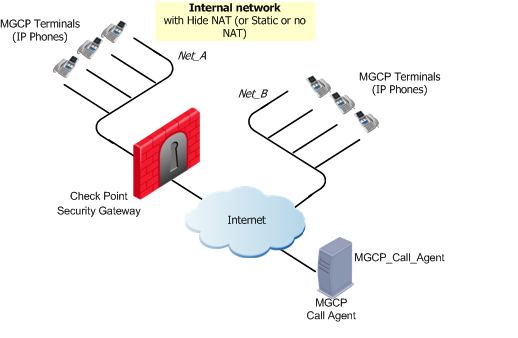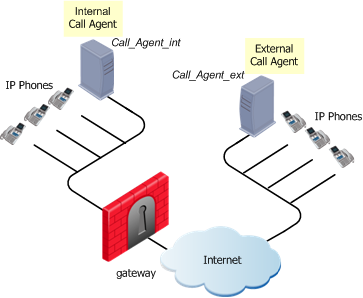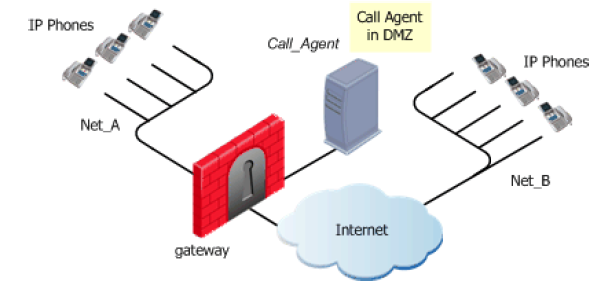


You can configure the Security Rule Base so that the gateway allows MGCP calls.
Best practice - Configure anti-spoofing on the Check Point gateway interfaces.
It is not necessary to define a rule that specifies which port to open and which endpoint can talk. The gateway automatically gets this information from the signaling. For VoIP signaling rules, the gateway automatically opens ports for the endpoint-to-endpoint RTP/RTCP media stream connections.
The Check Point Security Gateway window shows.
Note - Rematch connections is selected by default.
Note – The old policy rules are still intact for calls already in-progress and they will not be dropped.
These predefined MGCP services are available:
Predefined MGCP-Specific Services
Service |
Purpose |
|---|---|
UDP:mgcp_CA |
Used for MGCP over UDP, for connections using the well-known port is the Call-Agent port 2727. |
UDP:mgcp_MG |
Used for MGCP over UDP, the well-known port is the Media Gateway port 2427. |
Other:MGCP_dynamic_ports |
Allows a MGCP connection to be opened on a dynamic port and not on the MGCP well-known port. |
An MGCP topology with a Call Agent in the external network is shown in the image.
This procedure shows how to:

VoIP rule for this scenario:
Source |
Destination |
Services & Applications |
Action |
|---|---|---|---|
MGCP_Call_Agent |
Net_A |
mgcp_CA or mgcp_MG or mgcp_dynamic_ports |
Accept |
For the example in the image, these are Net_A and Net_B.
This illustration shows a Call Agent-to-Call Agent topology with the Call Agents on opposite sides of the gateway.

VoIP rule for this scenario:
Source |
Destination |
Services & Applications |
Action |
Comments |
|---|---|---|---|---|
Call_Agent_Int Call_Agent_Ext |
Call_Agent_Ext Call_Agent_Int |
mgcp_CA |
Accept |
Bidirectional calls |
To enable bidirectional calls between phones in internal and external networks:
The illustration shows an MGCP-based VoIP topology where a Call Agent is installed in the DMZ.

VoIP rule for this scenario:
Source |
Destination |
Services & Applications |
Action |
Comments |
|---|---|---|---|---|
Net_A Net_B Call_Agent |
Net_A Net_B Call_Agent |
mgcp_CA |
Accept |
Bidirectional calls |
To enable bidirectional calls between phones in internal and external networks (Net_A and Net_B):